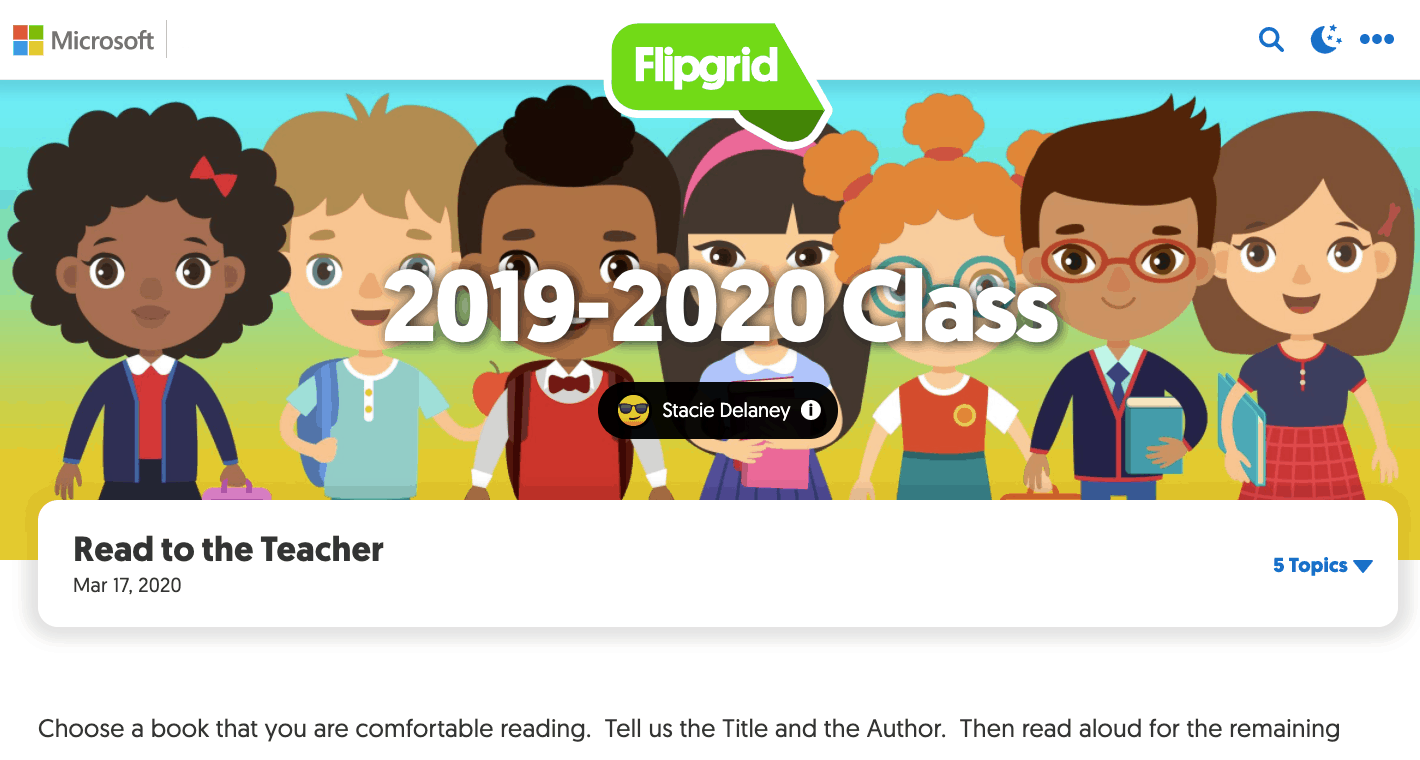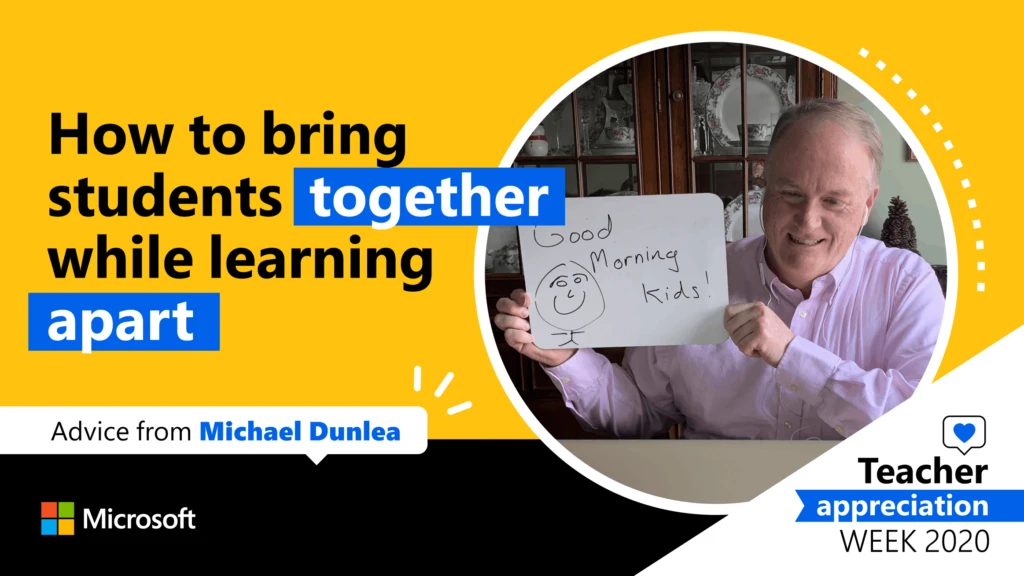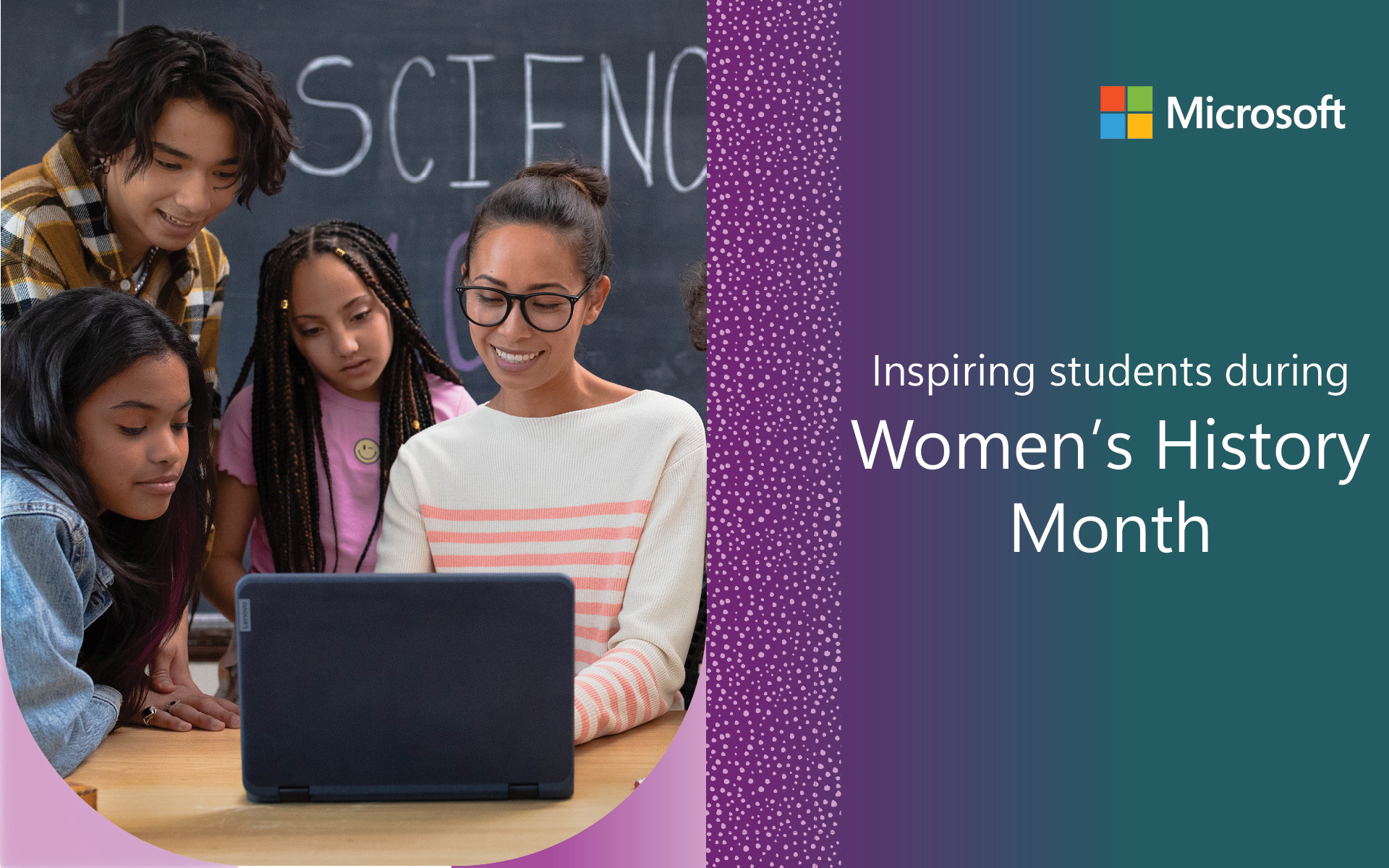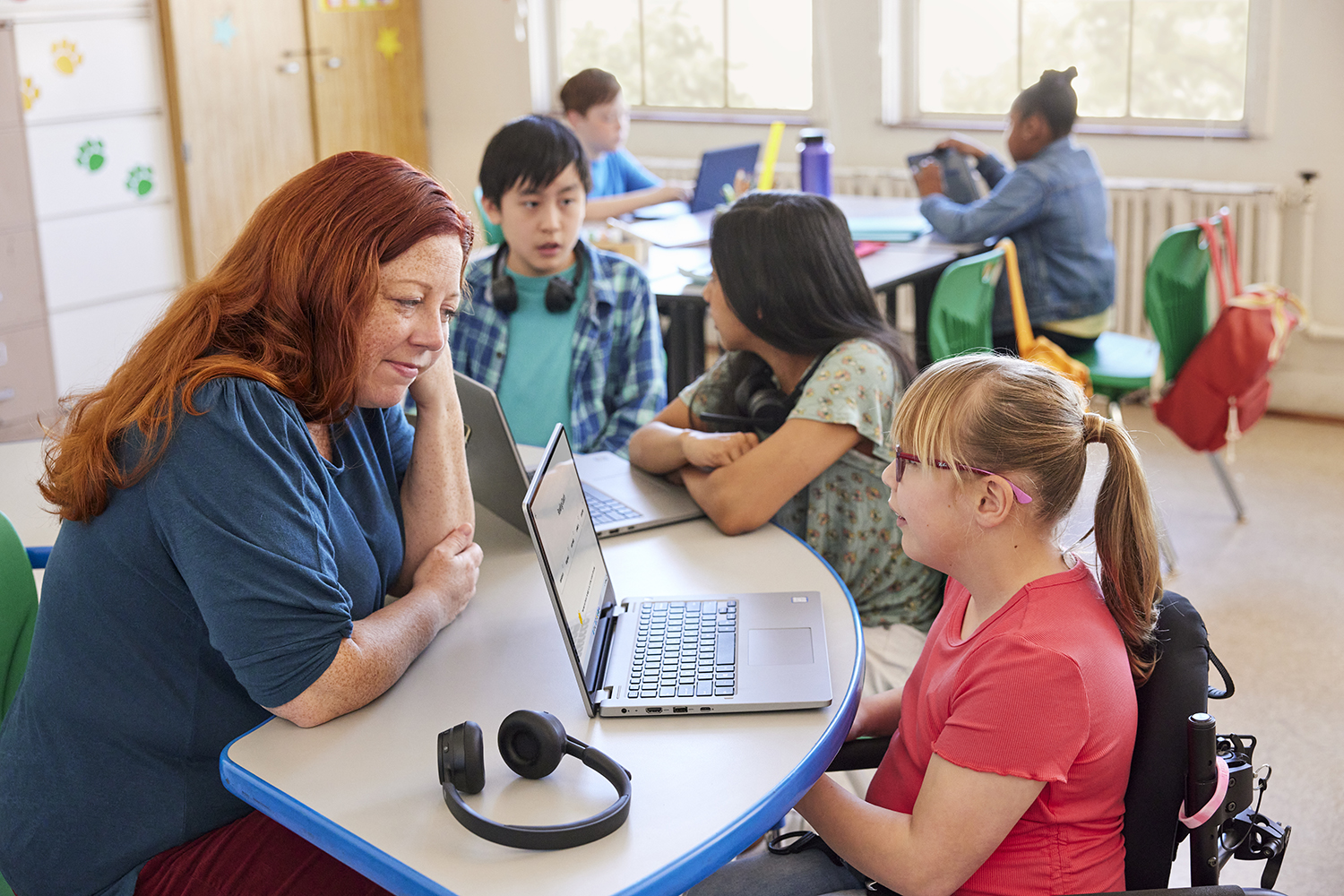It’s Teacher Appreciation Week and we want to take time to say thank you to educators.
Michael Dunlea’s third-grade classroom in Tabernacle, New Jersey is arranged like a traditional living room with comfortable seating and shared working spaces so students with different learning styles and strengths can collaborate on projects, share books, and foster communication.
Recreating that sense of warmth, camaraderie, and inclusion while his school is shuttered due to the global pandemic has been a challenge, but Michael isn’t one to shy away from challenges.
Michael, a Microsoft Innovative Educator Expert, was recently named as a top 50 finalist for the prestigious Varkey Foundation Global Teacher Prize. He was previously selected as Teacher of the Year in his district and a New Jersey State Teacher of the Year finalist. Michael is well known for using technology to connect students with their peers globally, and is recognized for his ability to personalize learning and empower student voice. The Microsoft Education Team was eager to check in with him to see how the transition to remote learning was going.
Keeping kids connected
“We eased into the new ‘classroom’, making it very social-emotional centric for the first week. We found ways to highlight the positives and focused on enjoyment,” explained Michael, adding that he then shifted toward more of an academic focus in which new material was introduced. Flipgrid, a free social learning tool that allows students and teachers to engage in video-based discussions, has played a leading role in remote learning for the class, says Michael. His co-teacher, Stacie Delaney, has been a fan of the tool for a while, using it to showcase student work to parents during in-school events.
Now, Michael says Flipgrid is helping keep students and teachers connected, even from afar. “Flipgrid helps us foster and build upon the community we created during our 116 days we spent in the actual classroom. Students can give positive feedback to their friends on their videos,” says Michael. “Few tools out there lend themselves to so many incredible advantages. Flipgrid allows us to seriously teach while fostering strong emotional and social growth among our students.”

Reading instruction continues
Michael says Flipgrid has been particularly important for teaching reading. He has students record themselves reading using the app, and he follows with instruction. “For young emerging learners who struggle with reading, it is incredibly important to focus on pride, resilience, and celebration. We build up our students, not toughen them up. We show them what they need to do to become stronger in their reading skills and then we help them make that progress. When they hear themselves reading aloud, it is powerful,” he says.
“We use Flipgrid as a way to bring together all the teaching of glued sounds, blends, diphthongs, and suffixes and prefixes. We work extensively with syllables and then when the student reads into the Flipgrid video we can show them exactly where they applied the skills correctly and where they may need to remember the rules,” Michael said. “Flipgrid allows for authentic, individualized attention that helps drive targeted instruction that leads to significant growth and progress in young emerging readers.”
Prior to Tabernacle Elementary School’s closure in mid-March, Michael and his colleagues told students to take home as many classroom library books as they’d like. They are now coaching parents on how to help kids choose the right reading levels.
Michael and his students also haven’t given up on their much-loved classroom book clubs, in which four or five students read a chapter book together with some differentiation in learning goals. “The stronger readers are looking at story elements and critical thinking and analysis. The struggling readers are more focused on word attack skills and phonics while also focusing on story elements and critical thinking,” explains Michael. He says he’s now working to establish ways for his students to work virtually in small groups and discuss the books they’re reading, much like they do when they’re in school.
Let students lead and draw parents in
When asked what advice he’d give other teachers, Michael says allow for mistakes and treat them as learning opportunities. He also encourages teachers to let students help lead the learning. “Whenever I use something new, I am completely honest and invite students to learn alongside me. I will say ‘Hey Amelia, how did you do that? Can you show me and the class?’ That simple statement sends an electric current through the class that screams inclusion or belonging. This can happen in a classroom whether it is in a school or scattered across a county in 22 different living rooms, dining rooms, bedrooms, or dens,” he says.
Michael says incorporating parents and guardians into the learning process, and helping them get comfortable with new tech tools can lead to positive outcomes as well.
“Use Flipgrid for parents to send messages of encouragement to their kids. Have parents do a Flipgrid so they actually learn to use it as well and have them turn in feedback on what you are doing to help their kids at home,” he advises. “Be creative and innovative, the times demand it and it makes teaching and learning exciting and fun.”
Join us in honoring amazing educators all over the world by using these templates to highlight a teacher that inspires you.










